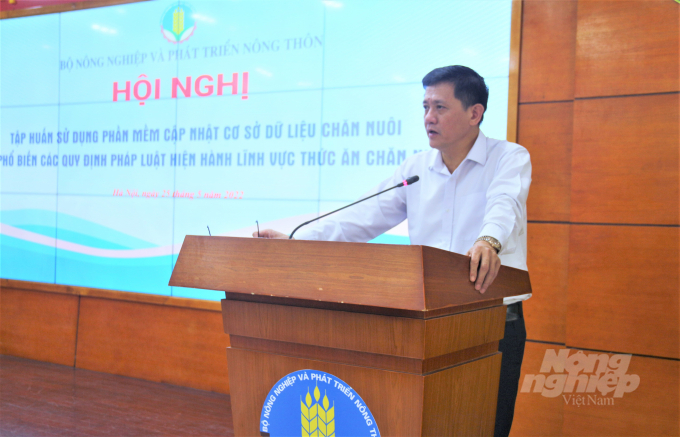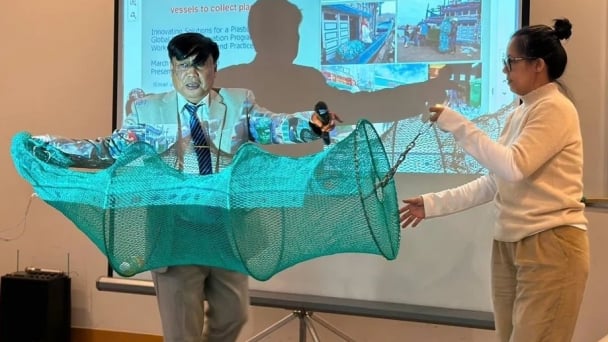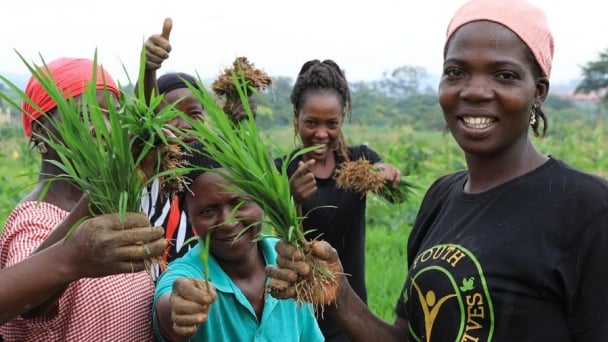May 15, 2025 | 16:24 GMT +7
May 15, 2025 | 16:24 GMT +7
Hotline: 0913.378.918
May 15, 2025 | 16:24 GMT +7
Hotline: 0913.378.918

Training conference on using software to update animal feed databases and disseminate current legal regulations on animal feed. Photo: Pham Hieu.
On May 25, the Ministry of Agriculture and Rural Development held a training conference on using software to update animal feed databases and disseminate current legal regulations on animal feed.
Implementing the Government's direction on digital transformation, the Ministry of Agriculture and Rural Development has coordinated with the Vietnam Posts and Telecommunications Group (VNPT) - an experienced information technology partner with an extensive network of 63 provinces/cities city to build and develop a national database system on agriculture.
The industry needs to associate agricultural production with the market, making it quick and convenient to update, connect, and share information and help production orient quality control of agricultural products.
Facing the urgent requirements of production practice, industry development orientation according to the Livestock Development Strategy from 2021 to 2030, with a vision to 2045, as well as the needs of livestock management according to the Law on Livestock, the Department of Livestock Production The assigned livestock farming unit is the unit in charge of organizing the implementation, coordinating with VNPT to manage the pilot implementation of building a database system on livestock.
Mr. Hoang Manh Thang, smart agricultural product manager of VNPT, said, accompanying agriculture, VNPT has been building and implementing solutions in the digital transformation. One of the solutions completed by VNPT and the Department of Livestock Production is to create a software system to update the livestock database, specifically animal feed management.
The national database on livestock production will be a platform to help connect and share information actively two-way between state management agencies, livestock enterprises, and breeders. This system will help update accurate and timely information on livestock production facilities, total livestock herds, production of livestock products, animal feed, and product consumption markets.
In the first phase, the Department of Livestock Production will work closely with VNPT to focus on building a database system for livestock production facilities and pilot feed production facilities in some localities and businesses. On that basis, there will be a review, evaluation, and system improvement before it is replicated and deployed nationwide.
"Currently, we are training, deploying, training to localities. In the first three months, we will carry out trials and pilots in Hai Duong, Vinh Phuc, and Dong Nai provinces to collect opinions from business units, state management agencies, and farmers. Thereby, perfecting the software, proceed with nationwide deployment", Mr. Hoang Manh Thang informed.

Mr. Duong Tat Thang, Director of the Department of Livestock Production, spoke at the conference. Photo: Pham Hieu.
The representative of VNPT assessed that the software to update the livestock database is a breakthrough in the digital transformation of the agriculture industry in general and the livestock industry in particular.
"In digital transformation, the first step is collecting and digitizing data. The second step is to digitize the process. The new exploitation and operation can be implemented more deeply based on those data and processes," shared Mr. Hoang Manh Thang.
The national database on livestock production is an essential basis for improving the management and administration capacity of state management agencies and livestock development organizations according to orientations, market signals, and needs, and at the same time, strictly control the quality and safety of livestock food to improve the value and competitiveness of Vietnamese livestock products.
For businesses, this is an opportunity to update market information and market products and connect and cooperate with customers. This database system will help farmers capture output market information, breed quality, animal feed, selling price, service and supplies, and disease information to make appropriate decisions.
According to the Director of the Department of Livestock Production, Mr. Duong Tat Thang: The Department of Livestock Production always accompanies, supports, and creates conditions for all businesses in the livestock sector in general and feed in particular to aim for the development of the livestock industry sustainably.
"The software to update the livestock database needs to bring convenience and convenience and a lot of information suitable for the management and administration; also, helping businesses and farmers capture and connect the market. This is the key to establishing plans to help the livestock industry develop sustainably in the coming period," emphasized Mr. Duong Tat Thang.
Digital transformation of the agricultural sector is built on three pillars: Digital set, digital agricultural economy, rural area, and digital farmer. Digital transformation is not only an activity following a short-term trend but also a seamless and seamless journey to change the face of Vietnam's agriculture in the 4.0 technology era.
Translated by Ha Phuc

(VAN) Data from 10,000 farming households will help professionalize production organization and support the implementation of the One Million Hectares Program for High-Quality, Low-Emission Rice Cultivation.

(VAN) FAO Director-General QU Dongyu marks International Day of Plant Health at NENA conference.

(VAN) Deputy Minister of Agriculture and Environment Hoang Trung affirmed that floriculture and ornamental plants are a growing industry that receives significant global attention.

(VAN) The three staple crops dominating modern diets – corn, rice and wheat – are familiar to Americans. However, fourth place is held by a dark horse: cassava.
/2025/05/10/4037-3-223011_495.jpg)
(VAN) Remote sensing technology is becoming an indispensable tool in monitoring resources, developing modern agriculture, and protecting the environment in Vietnam.

(VAN) The trash bag used on fishing vessels can withstand rough sea conditions, including level 8 to level 10 winds and waves. Notably, it can be hung anywhere on the boat.

(VAN) African leaders launched the Kampala Declaration on Building Resilient and Sustainable Agrifood Systems in Africa, marking a bold step toward transforming the continent's agriculture.